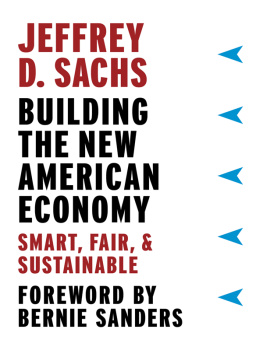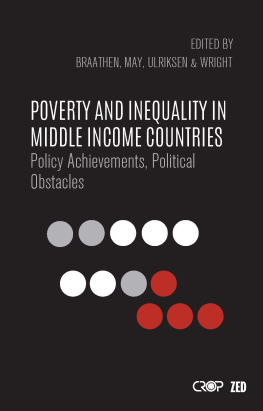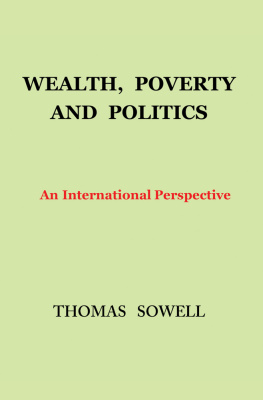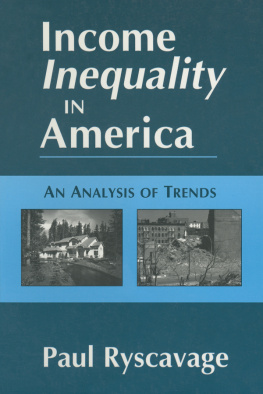Phil Gramm served six years in the US House of Representatives and eighteen years in the US Senate, where he was chairman of the Banking Committee. Gramm is a visiting scholar at the American Enterprise Institute. He was vice chairman of UBS Investment Bank and is now vice chairman of Lone Star Funds. He taught economics at Texas A&M University and has published numerous articles and books. Gramm lives in the Texas Hill Country.
Robert Ekelund is currently professor and eminent scholar in economics (emeritus) at Auburn University, having begun his career at Texas A&M University. He is the author of more than twenty books and several hundred articles on the history of economic theory, economic history, and economic policy in the specific areas of art, religion, and regulation. He lives and works in Auburn, Alabama.
John Early is a mathematical economist who began working as a legislative assistant to a US senator and assistant commissioner at the Bureau of Labor Statistics. He has served in senior leadership positions in global consultancies on quality and financial performance and as chief customer and strategy officer for a Fortune 100 company. His publications include improving measurements of price change, labor force dynamics, and improving healthcare. He lives joyfully in Charleston, South Carolina.
Appendix A
FEDERAL GOVERNMENT TRANSFER PROGRAMS
The following list of federal transfer programs comes from the US Senate Budget Committee, CRS Report: Welfare Spending the Largest Item in the Federal Budget, Washington, DC, 2013, and the Congressional Research Service (CRS), Spending for Federal Benefits and Services for People with Low Income, FY 20012011: An Update of from CRS Report R41625, October 16, 2012. The updated dollar values used in the main text come from the Bureau of Economic Analysis, National Income and Product Accounts, which, however, do not include so-called unattributable benefits in the CRS report. Attributable transfers tie each dollar to a specific persons name; unattributable transfers often have client lists of who receives benefits, but the individual value of the benefit is not tracked. The original list of programs has been augmented by so-called social insurance programs, Affordable Care Act (ACA) subsidies, student loan interest subsidies, and Lifeline telephones. The social insurance programs and student loans were simply out of scope for the CRS inquiry since they were already documented. The ACA subsidies were not yet active at the time of the report, and the Lifeline program is funded through Federal Communication Commission fees and not under Senate Budget Committee purview. The original list has been rearranged to show which programs are included in the Census money income and Congressional Budget Office (CBO) estimates.
At Least Partially in Both Census Money Income Estimates and CBO Estimates
- 1. Social Security Old-Age and Survivors Insurance
- 2. Social Security Disability Insurance
- 3. Unemployment Insurance
- 4. Workers Compensation
- 5. Supplemental Security Income (SSI)
- 6. Temporary Assistance for Needy Families (TANF) (cash aid)
- 7. Transitional Cash for Refugees
At Least Partially in Census Money Income Estimates but Not CBO
At Least Partially in CBO Estimates but Not Census
- 9. Medicare
- 10. Medicaid
- 11. Earned Income Tax Credit (refunded component)
- 12. Additional Child Tax Credit (refunded component)
- 13. Supplemental Nutrition Assistance Program (SNAP)
- 14. State Childrens Health Insurance Program (CHIP)
- 15. National School Lunch Program (free/reduced price components)
- 16. School Breakfast Program (free/reduced price components)
- 17. Section 8 Housing Choice Vouchers
- 18. Section 8 Project-Based Rental Assistance
- 19. Miscellaneous other housing assistance
- 20. Low-Income Home Energy Assistance Program (LIHEAP)
- 21. Voluntary Medicare Prescription Drug BenefitLow-Income Subsidy
- 22. Payments for cost-sharing reduction under Affordable Care Act (effective 2014)
Attributable Transfers Not in Census or CBO Estimates
- 23. Special Supplemental Nutrition Program for Women, Infants, and Children (WIC)
- 24. Single-Family Rural Housing Loans
- 25. Rural Rental Assistance Program
- 26. Temporary Assistance for Needy Families (TANF) (social services)
Unattributable Transfers Not in Census or CBO Estimates
- 27. Public Housing
- 28. Family Planning
- 29. Consolidated Health Centers
- 30. Transitional Medical Services for Refugees
- 31. Ryan White HIV/AIDS Program
- 32. Breast/Cervical Cancer Early Detection
- 33. Maternal and Child Health Block Grant
- 34. Indian Health Service
- 35. Child and Adult Care Food Program (lower-income components)
- 36. Summer Food Service Program
- 37. Commodity Supplemental
- 38. The Emergency Food Assistance Program (TEFAP)
- 39. Nutrition Program for the Elderly
- 40. Indian Education
- 41. Adult Basic Education Grants to States
- 42. Federal Supplemental Educational Opportunity Grant
- 43. Education for the DisadvantagedGrants to Local Educational Agencies (Title I-A)
- 44. Title I Migrant Education Program
- 45. Higher EducationInstitutional Aid and Developing Institutions
- 46. Federal Work-Study
- 47. Federal TRIO Programs
- 48. Education for Homeless Children and Youth
- 49. 21st Century Community Learning Centers
- 50. Gaining Early Awareness and Readiness for Undergraduate Programs (GEAR-UP)
- 51. Reading First and Early Reading First
- 52. Rural Education Achievement Program
- 53. Mathematics and Science Partnerships
- 54. Improving Teacher Quality State Grants
- 55. Academic Competitiveness and Smart Grant Program
- 56. Water and Waste Disposal for Rural Communities
- 57. Public Works and Economic Development
- 58. Supportive Housing for the Elderly
- 59. Supportive Housing for Persons with Disabilities
- 60. Community Development Block Grants
- 61. Homeless Assistance Grants
- 62. Home Investment Partnerships Program (HOME)
- 63. Housing Opportunities for Persons with AIDS (HOPWA)
- 64. Indian Housing Block Grants
- 65. Neighborhood Stabilization Program
- 66. Grants to States for Low-Income Housing in Lieu of Low-Income Housing Credit Allocations
- 67. Tax Credit Assistance Program
- 68. Indian Human Services
- 69. Older Americans Act Grants for Supportive Services and Senior Centers
- 70. Older Americans Act Family Caregiver Program
- 71. Child Support Enforcement
- 72. Community Services Block Grant
- 73. Child Care and Development Fund
- 74. Head Start HHS
- 75. Developmental Disabilities Support and Advocacy Grants
- 76. Foster Care
- 77. Adoption Assistance
- 78. Social Services Block Grant
- 79. Chafee Foster Care Independence Program
- 80. Emergency Food and Shelter Program
- 81. Legal Services Corporation
- 82. Supplemental Nutrition Assistance Program (SNAP) (employment and training component)
- 83. Community Service Employment for Older Americans
- 84. Workforce Investment Act (WIA) Adult Activities
- 85. Workforce Investment Act (WIA) Youth Activities
- 86. Social Services and Targeted Assistance for Refugees
- 87. Temporary Assistance for Needy Families (TANF) (employment and training)
- 88. Foster Grandparents
- 89. Job Corps
- 90. Weatherization Assistance Program






